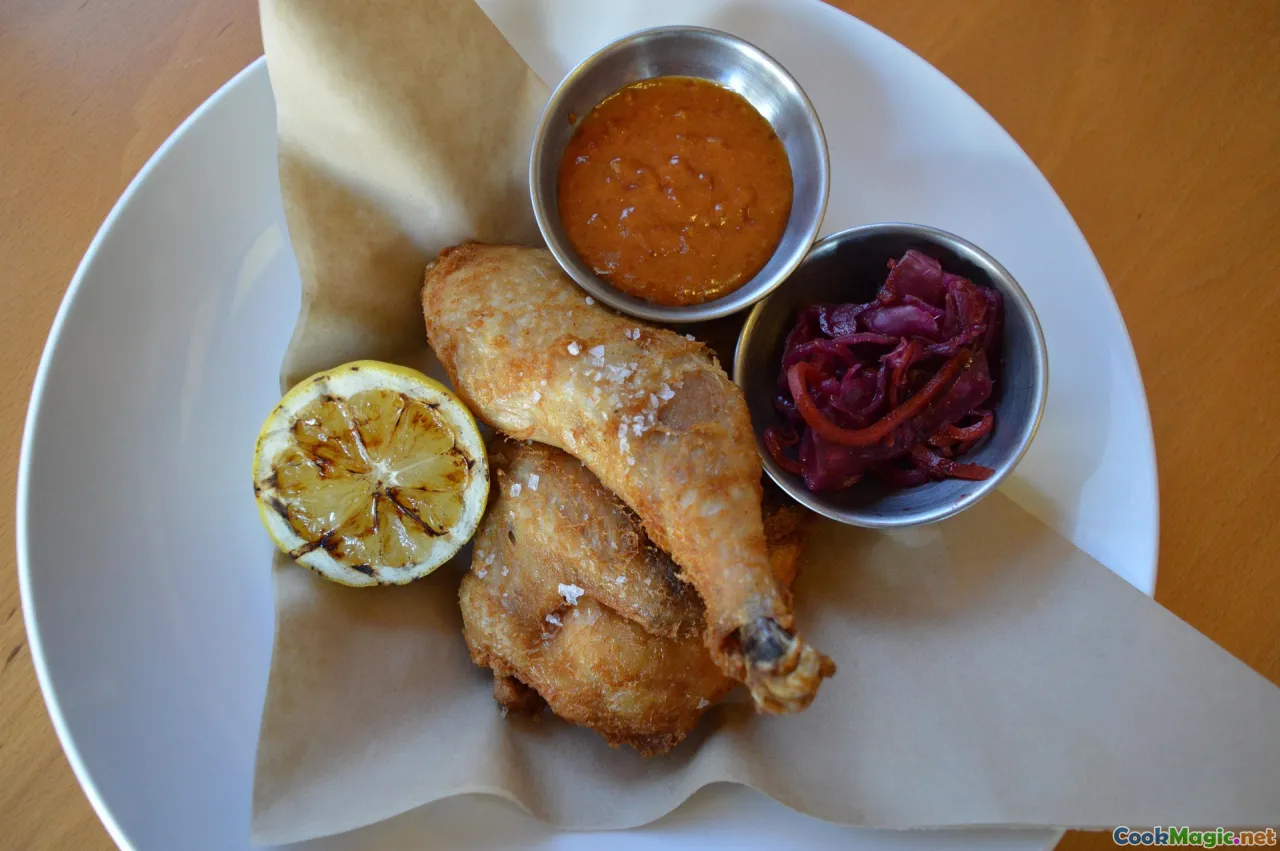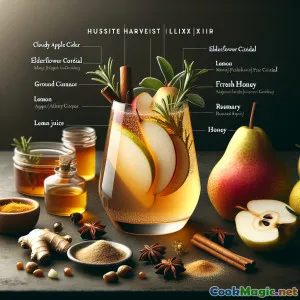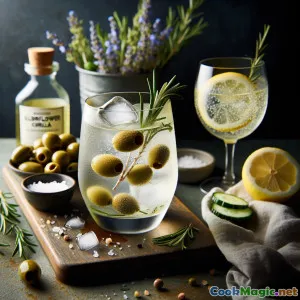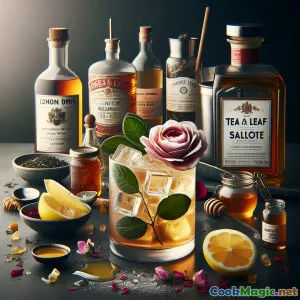
奶油花生香草酱牛舌
(Beef Tongue in Creamy Peanut-Herb Sauce)
(0 评论)食材
-
1 whole (approx. 1.2kg) 牛舌
(新鲜、干净的舌头能带来最佳风味。)
-
85 grams 花生
(烤制的,无盐;可用腰果作为变体。)
-
30 grams 平叶欧芹
(大致切碎)
-
15 grams 新鲜薄荷叶
(茎已去除)
-
10 grams 龙蒿
(可选,但强烈推荐以提升风味深度。)
-
2 cloves 大蒜
(压碎的)
-
1 teaspoon 英式芥末
(增加温和的火力)
-
2 tablespoons 苹果醋
(使风味更鲜明)
-
1 tablespoon 蜂蜜
(酸度平衡)
-
120 ml 全脂牛奶
(稀释酱汁)
-
1 teaspoon 盐
(根据口味调整)
-
0.5 teaspoon 黑胡椒
-
1 medium 洋葱
(切成四份)
-
2 whole 月桂叶
-
1 whole 芹菜梗
(可选,用于芳香的焖煮液。)
-
1 whole 胡萝卜
(去皮,用于炖舌头)
-
2 liters 水
(用于烹饪舌头)
(新鲜、干净的舌头能带来最佳风味。)
(烤制的,无盐;可用腰果作为变体。)
(大致切碎)
(茎已去除)
(可选,但强烈推荐以提升风味深度。)
(压碎的)
(增加温和的火力)
(使风味更鲜明)
(酸度平衡)
(稀释酱汁)
(根据口味调整)
(切成四份)
(可选,用于芳香的焖煮液。)
(去皮,用于炖舌头)
(用于烹饪舌头)
营养
- 份量: 4
- 每份大小: 1盘(250克)
- Calories: 525 kcal
- Carbohydrates: 0 g
- Protein: 37 g
- Fat: 34 g
- Fiber: 5 g
- Sugar: 7 g
- Sodium: 680 mg
- Cholesterol: 185 mg
- Calcium: 92 mg
- Iron: 5.4 mg
制作步骤
-
1 - 准备焖煮用的液体:
将牛舌放入一个大锅中,加入洋葱、月桂叶、盐、芹菜和胡萝卜(如使用)。加水至完全覆盖。用小火煮至微沸。
-
2 - 把舌头用小火慢炖。:
盖上锅盖,调小火,用小火炖煮3小时,直到牛舌用叉子也能轻松叉穿为止。烹饪过程中浮起的泡沫请撇去。
-
3 - 去除并去皮:
将舌头移到砧板上。稍微放凉后,去掉厚厚的外皮。横向切成1厘米厚的薄片。
-
4 - 混合花生香草酱:
在搅拌机中,将花生、欧芹、薄荷、龙蒿(如使用)、大蒜、芥末、苹果醋、蜂蜜、牛奶、盐和黑胡椒混合在一起。搅拌至形成奶油状酱汁。需要时可再加入更多牛奶以调整稠度。
-
5 - 重新加热并摆盘.:
如愿的话,在少量预留的焖煮汁中温热舌头片。将其摆放在盘子上,并慷慨淋上花生香草酱。用额外的香草和切碎的花生进行装饰。
将牛舌放入一个大锅中,加入洋葱、月桂叶、盐、芹菜和胡萝卜(如使用)。加水至完全覆盖。用小火煮至微沸。
盖上锅盖,调小火,用小火炖煮3小时,直到牛舌用叉子也能轻松叉穿为止。烹饪过程中浮起的泡沫请撇去。
将舌头移到砧板上。稍微放凉后,去掉厚厚的外皮。横向切成1厘米厚的薄片。
在搅拌机中,将花生、欧芹、薄荷、龙蒿(如使用)、大蒜、芥末、苹果醋、蜂蜜、牛奶、盐和黑胡椒混合在一起。搅拌至形成奶油状酱汁。需要时可再加入更多牛奶以调整稠度。
如愿的话,在少量预留的焖煮汁中温热舌头片。将其摆放在盘子上,并慷慨淋上花生香草酱。用额外的香草和切碎的花生进行装饰。
关于 奶油花生香草酱牛舌 :的更多信息
Beef Tongue in Peanut Herb Sauce: A Modern Twist on English Fare
If you’ve ever wanted to push the boundaries of traditional English cuisine and savor the complex delights of nose-to-tail eating, look no further than Beef Tongue in Peanut Herb Sauce. This dish brings together the classic slow-cooked tenderness of beef tongue and pairs it with a creamy, vibrant sauce inspired by both British and international flavors. Its rich cultural heritage and creative modern elements make it an exceptional main course for adventurous cooks eager to exercise skill and surprise.
Background & History
Beef tongue is one of the traditional cuts treasured in English country cooking, often considered a delicacy reserved for special Sunday lunches or festive occasions. While not as commonly encountered on everyday tables in recent decades, tongue's reputation for flavor and melt-in-your-mouth tenderness remains undisputed. Historically, it would be poached simply along with aromatics and served cold, accompanied by piquant mustard or horseradish. Here, the classic cut is reimagined: the tongue is slow-simmered, deeply seasoned, and uplifted with an elegant, contemporary sauce blending roasted peanuts, fresh herbs, and the zing of vinegar.
Peanuts aren’t native to England, but found their way into the modern British kitchen through colonial and global influences. Combining them—with herbs like mint and parsley—with other local flavors is reflective of the fusion trend shaping UK dining today. Cutting through the unctuous character of offal with creamy nuttiness and bursts of green, it raises this humble classic to gourmet status.
The Art & Novelty of Offal
Eating beef tongue requires a sense of culinary adventure, but its reward is unforgettable. The meat is gently braised until supremely soft, sliced thin, and served warm—perfectly contrasted by the lush, tangy peanut herb sauce. The flexibility of the recipe (use tarragon or swap in other herbs that look best at the market) means that creative cooks can adapt based on seasonality, or to encourage wary eaters to discover delicious new favorites.
Tips & Tricks
- Tongue Preparation: Plunging the tongue into hot water as the first step makes removing the skin easy once braised. Peel very soon after braising when it's still warm for best results.
- Flavor Infusion: Aromatics like bay leaf, celery, and carrot deepen tongue's natural savory qualities. You can swap in leeks or fennel for nuance.
- Peanut Allergy? Cashews or sunflower seeds blended with herbs also yield a creamy, unique sauce for those avoiding peanuts.
- Make Ahead: Cooked tongue keeps for days in the fridge, and you can prepare the herb sauce up to a day ahead. They’re easy to assemble just before serving.
- Serving Suggestions: Pair with simply boiled new potatoes, roasted root vegetables, or a crusty British brown bread to soak up every last drop of sauce.
Cultural Significance
Beef tongue connects modern tables with a rich heritage, reminding us of a time when British cooks were ingenious in transforming humble or overlooked cuts into something splendid. Today, modern cooks are rediscovering the creativity and fullness this food offers, celebrating sustainability and whole-animal appreciation. By integrating international flavors—like peanuts and fresh tarragon—this recipe fuses contemporary tastes with time-honored values, making every meal more exciting and meaningful.
Unique Aspects & Final Thoughts
What makes this dish particularly unique is the striking interplay of earthy beefiness and silky herbal creaminess. The peanut sauce not only provides flavor, but color and body, ensuring the dish feels decadent yet unexpectedly bright and modern. It’s a conversation starter, a piece of culinary history reinvigorated for a new generation.
As a chef who loves to invite diners beyond their comfort zones, I find offal dishes like this exemplify the best of English kitchen values: thrift, creativity, and respect for the breadth of ingredients our world provides. Give it a try, and you might discover a new favorite that ... literally, and figuratively ... brings new tongue to the table.
Bon appétit!

























